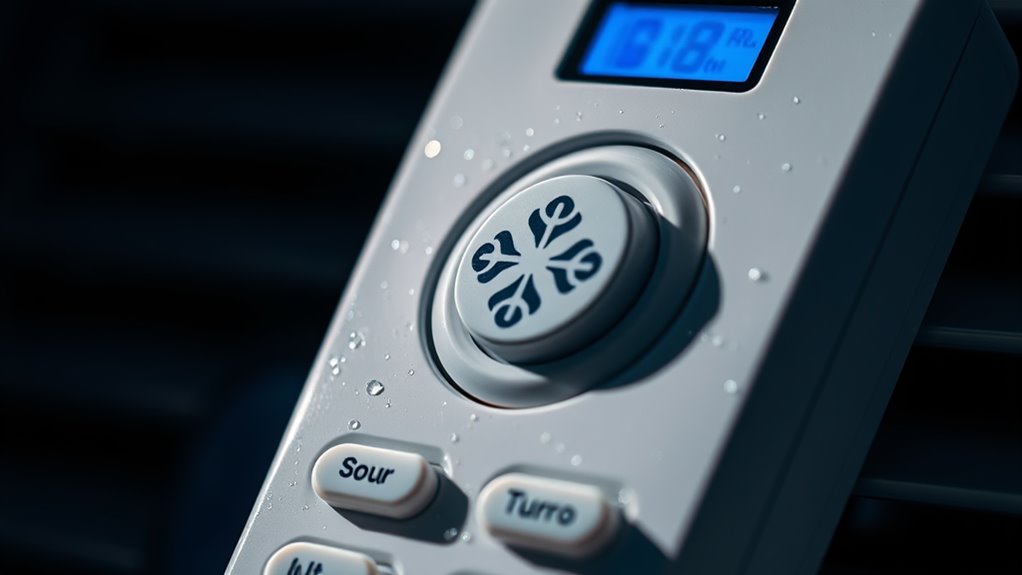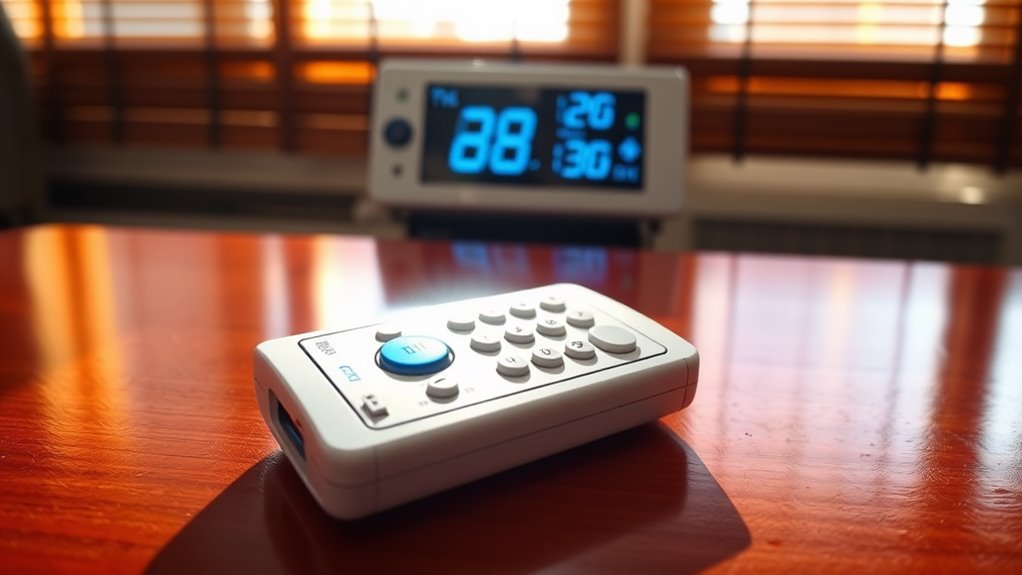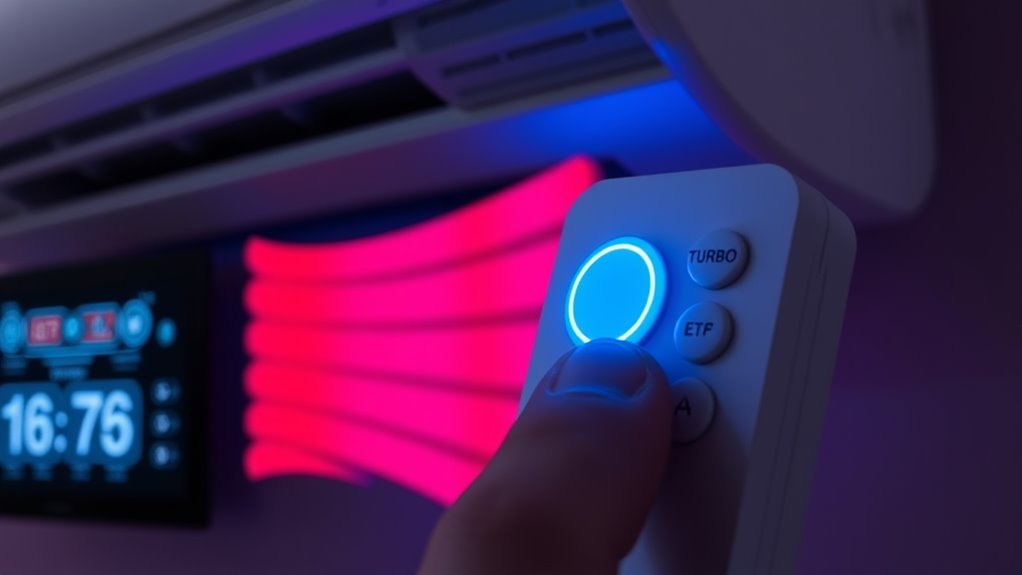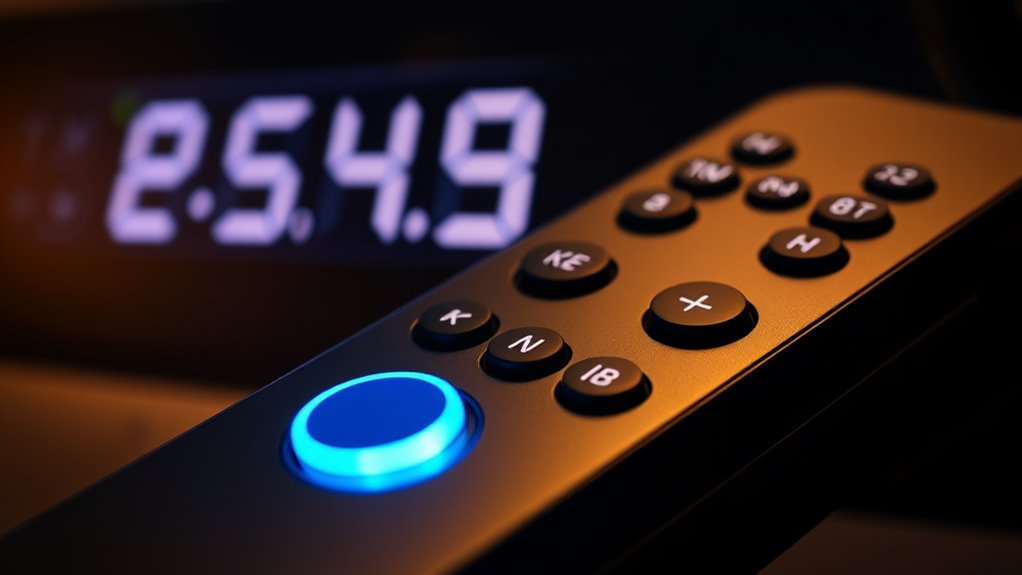Your AC remote’s turbo button might be silently draining your wallet. When activated, it forces your unit to run at maximum capacity, increasing energy usage by 30-50%. That innocent-looking feature can add $15-30 to your monthly bills while shortening your AC’s lifespan. We’ll show you smarter cooling alternatives that could save you nearly $100 monthly and keep your system running efficiently for years to come.
What Is the AC Turbo Button and How Does It Work?

Have you ever noticed that curious “Turbo” button on your AC remote but weren’t sure what it actually does?
It’s essentially an override function that forces your air conditioner to work at maximum capacity.
When activated, the turbo mode cranks up the compressor and fan speed to cool a room faster than normal settings would allow.
It’s like flooring the gas pedal in your car—you’ll get where you’re going quicker, but you’ll burn through fuel rapidly.
We often mistake this feature for an efficiency booster, when it’s actually an energy-intensive quick fix designed for occasional use. Regular maintenance is crucial to avoid costly AC repairs, as accumulated dirt can lead to inefficiencies in your system.
The Hidden Energy Costs of Using Turbo Mode Regularly

While the turbo button promises instant comfort on sweltering days, it silently drains your wallet with each press.
What many homeowners don’t realize is that turbo mode can increase energy consumption by 30-50% compared to normal operation.
We’ve found that running turbo mode for just one hour daily can add $15-30 to your monthly bill.
This seemingly innocent feature forces your compressor to work overtime, dramatically shortening your unit’s lifespan.
Instead, try setting your AC to a moderate temperature and using ceiling fans.
Additionally, implementing regular maintenance techniques can help reduce AC operating costs while still keeping your home comfortable.
You’ll still stay cool while avoiding those shocking electricity bills that make summer even more uncomfortable.
Smart Alternatives to Achieve Faster Cooling Without the Cost

Rather than reaching for the turbo button when you need quick cooling, several smarter alternatives can deliver the comfort you crave without the energy penalty.
First, try lowering the temperature by just 2-3 degrees instead of cranking it down dramatically. Closing blinds and curtains blocks heat while ceiling fans create a wind-chill effect that makes you feel cooler instantly.
We’ve found that programmable timers can pre-cool your space before you arrive home. Additionally, regular maintenance ensures optimal efficiency—clean filters can improve performance by up to 15%. Implementing essential maintenance techniques can significantly extend your AC system’s lifespan.
These approaches provide the quick comfort you want while keeping your wallet happy.
How to Calculate Your Actual Savings by Avoiding the Turbo Button

Exactly how much money vanishes from your wallet each time you press that tempting turbo button? Let’s crunch the numbers to find out.
| AC Setting | Power Usage | Daily Cost | Monthly Cost |
|---|---|---|---|
| Normal | 1.5 kW | $3.60 | $108 |
| Turbo | 2.8 kW | $6.72 | $202 |
| Difference | 1.3 kW | $3.12 | $94 |
| % Increase | 87% | 87% | 87% |
We’ve calculated based on a standard rate of $0.10/kWh with 24-hour usage. Your actual savings will depend on your local rates and usage patterns, but avoiding turbo mode could put nearly $100 back in your pocket monthly. Additionally, regular preventative AC maintenance can further enhance your system’s efficiency and longevity.
Frequently Asked Questions
Is the Turbo Button Harmful to My AC Unit’s Lifespan?
We don’t believe turbo mode significantly harms your AC’s lifespan, but it does force your unit to work harder, potentially causing more wear over time than normal operation would.
Can I Program My Smart AC to Limit Turbo Mode Usage?
Yes, we can absolutely program smart ACs to limit turbo mode usage with scheduling features or custom routines. Many newer models let us set timers or create rules through their companion apps.
Does Turbo Mode Effectiveness Vary by AC Brand or Model?
Yes, we’ve found turbo mode effectiveness varies significantly between brands and models. Some units deliver impressive quick-cooling bursts, while others just increase noise without proportional performance benefits.
Will Disabling Turbo Mode Affect My Warranty Coverage?
We don’t typically see turbo mode affecting warranty coverage. AC manufacturers design this feature as a legitimate function. However, it’s always smart to check your specific warranty paperwork to be absolutely certain.
Can Turbo Mode Cause Temperature Inconsistencies Throughout Larger Rooms?
Yes, we’ve found turbo mode can create cold spots near the unit while leaving distant areas warmer. It’s pushing air forcefully in one direction rather than distributing it evenly throughout your space.
Making Informed Choices: Conclusion on AC Turbo Button UsageConclusion
We’ve all been guilty of hitting that tempting turbo button when we’re desperate for cool air, but now we know better. By skipping this energy-draining feature, we’re keeping more money in our pockets without sacrificing comfort. Isn’t it fascinating how one small habit change can make such a big difference? Let’s be smarter about staying cool—your future self (and your wallet) will thank you.

Mike Gable is the founder and owner of Central Plumbing, Heating & Air Conditioning, proudly serving Bucks and Montgomery County since 2001.
With over two decades of hands-on experience, Mike’s mission has always been simple: deliver honest, high-quality service that homeowners and business owners can count on—day or night.
Through every blog post, Mike shares practical advice, expert insight, and a commitment to helping his community stay safe, comfortable, and confident in their home systems.

